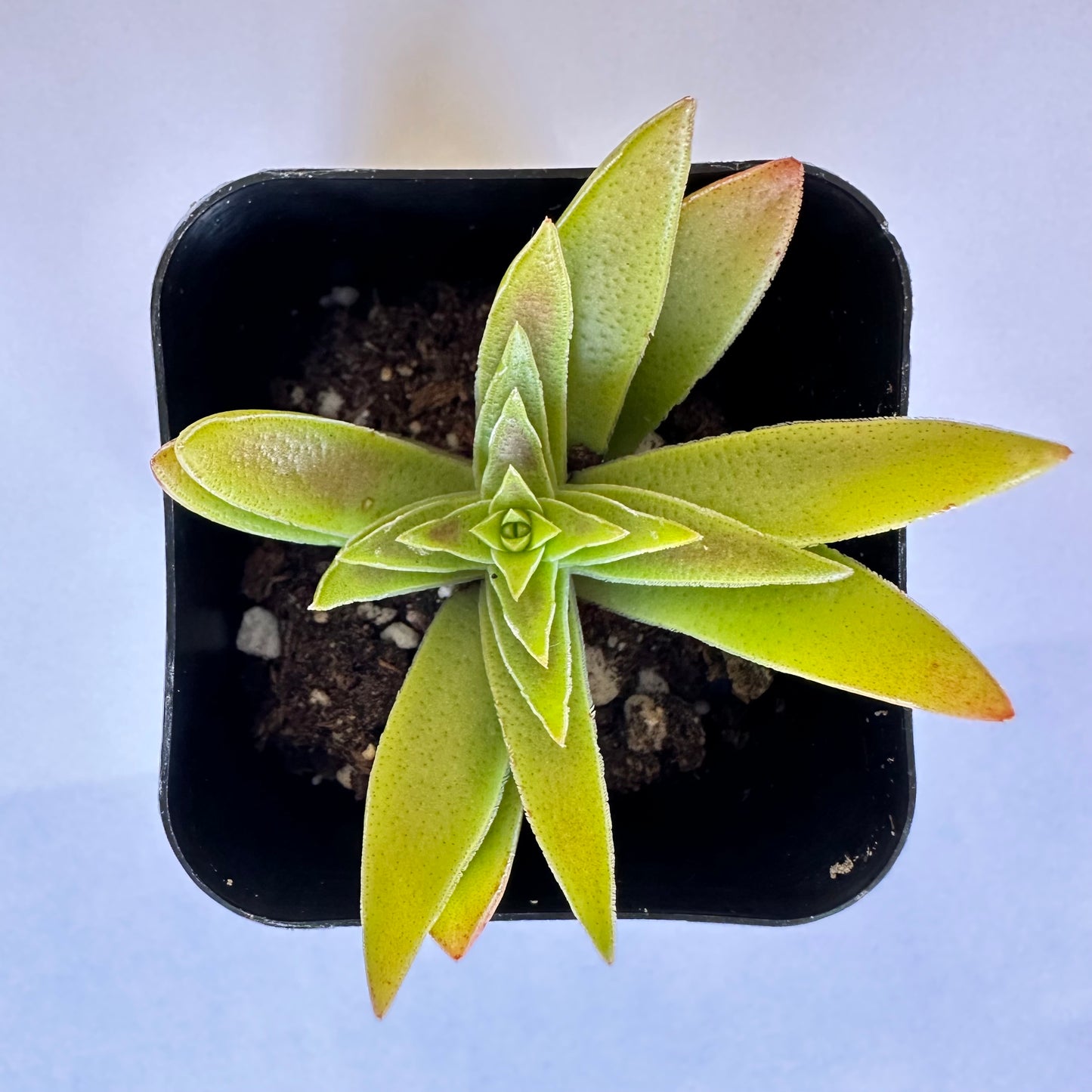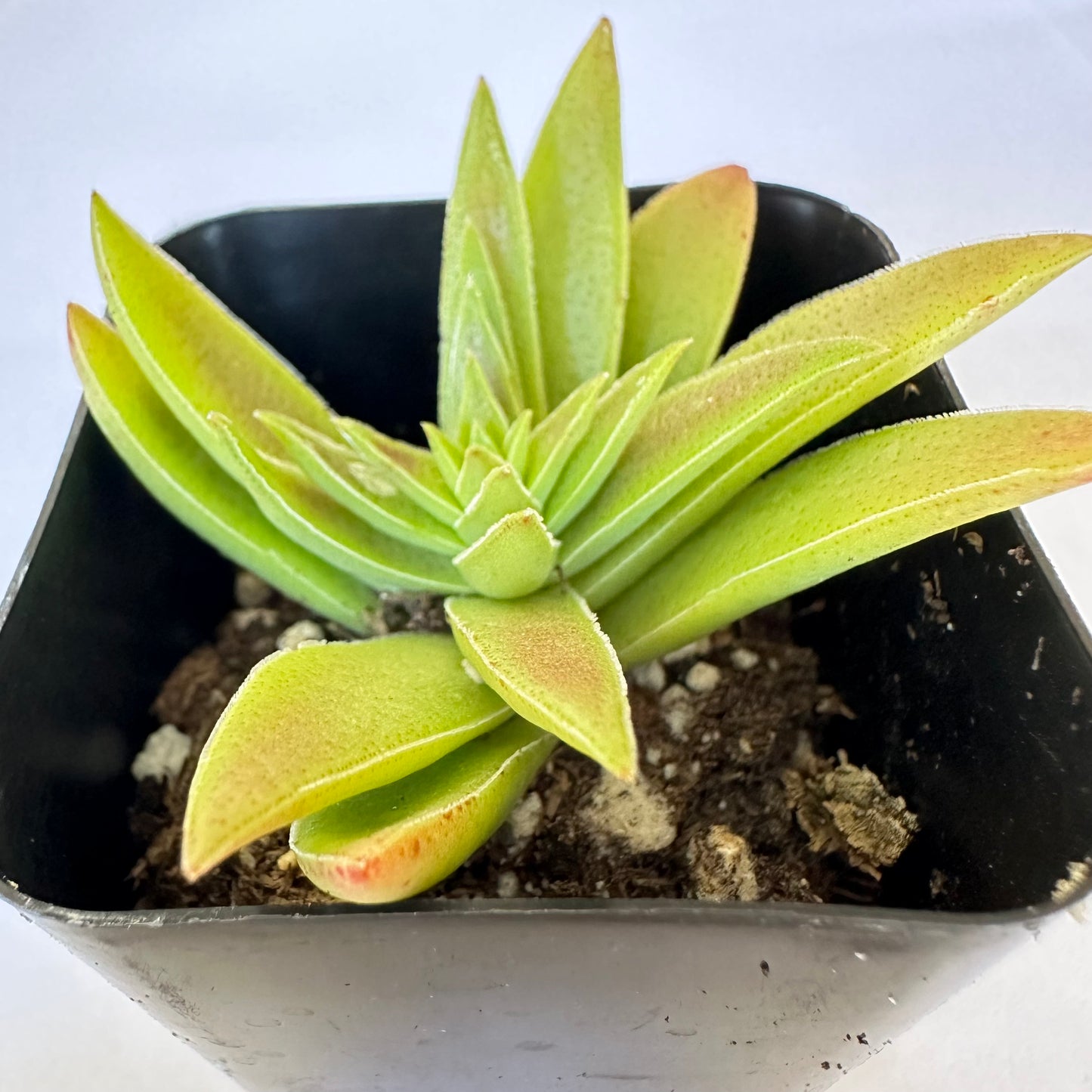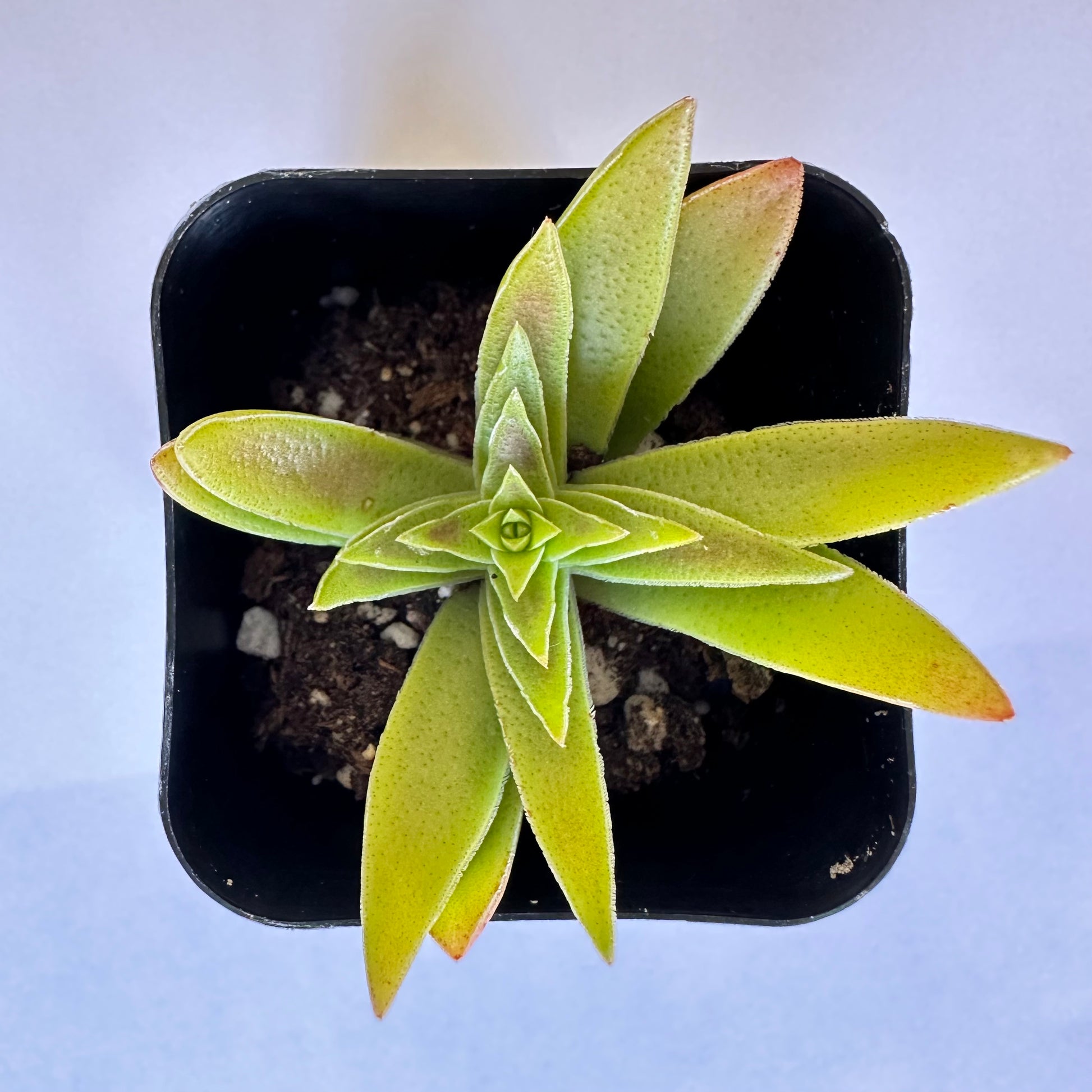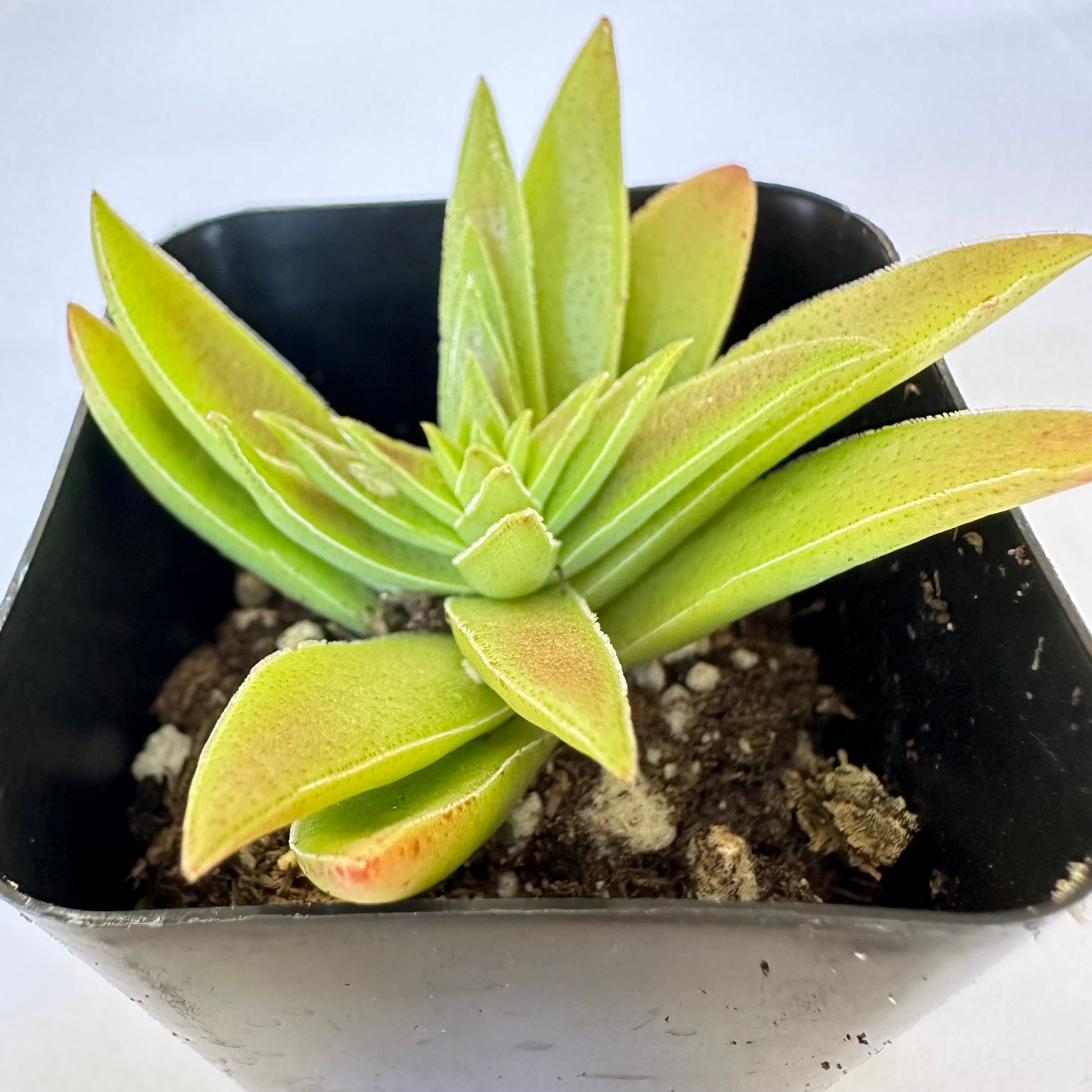SEAH
Crassula Capitella - Red Pagoda
Crassula Capitella - Red Pagoda
Couldn't load pickup availability
Morphological Characteristics
Crassula capitella, commonly known as Red Pagoda, is a member of the Crassulaceae family, notable for its striking, colorful foliage. This succulent features triangular leaves that stack neatly in a pagoda-like formation. The leaves are green but can turn a vibrant red or burgundy, especially when exposed to full sun. The edges of the leaves often have a slightly scalloped appearance, adding to the plant’s ornamental value. During the growing season, Crassula capitella can produce small, star-shaped white or pink flowers on slender inflorescences.
Growth Habits
Crassula capitella is a moderately fast-growing succulent that thrives in various environments. It prefers warm climates and can tolerate a range of conditions, including drought and poor soil. In its natural habitat, it often grows in rocky or sandy soils that provide excellent drainage.
Maintenance Points
• Lighting: This plant prefers bright, indirect sunlight but can also thrive in full sun, which enhances the red coloration of the leaves. Too little light may result in dull leaf color and weak growth.
• Watering: As a succulent, Crassula capitella requires minimal watering. The soil should be allowed to dry out completely between waterings. Over-watering or poor drainage can lead to root rot.
• Soil: A well-draining succulent or cactus mix is ideal, potentially enhanced with additional perlite or sand to improve drainage.
• Temperature: It does best in temperatures between 20-30°C (68-86°F). Avoid exposure to temperatures below 10°C (50°F) to prevent cold damage.
• Fertilization: Feed lightly with a balanced, water-soluble fertilizer during the growing season; however, too much fertilizer can harm the plant, so it should be done sparingly.
Reproduction Method
Crassula capitella can be propagated primarily through leaf cuttings, stem cuttings, and offsets.
1. Leaf Cuttings: Gently twist a healthy leaf from the stem. Allow the leaf cutting to dry for a few days until the cut end forms a callus. Place the callused cutting on top of well-draining soil and water sparingly until roots appear.
2. Stem Cuttings: Cut a healthy stem section from the parent plant and let it dry for a few days until the cut end forms a callus. Plant the callused end in well-draining soil and water sparingly until roots develop.
3. Offsets: Small rosettes or “pups” form at the base of the parent plant. These can be carefully removed and replanted in similar soil conditions to grow as new independent plants.
Share



